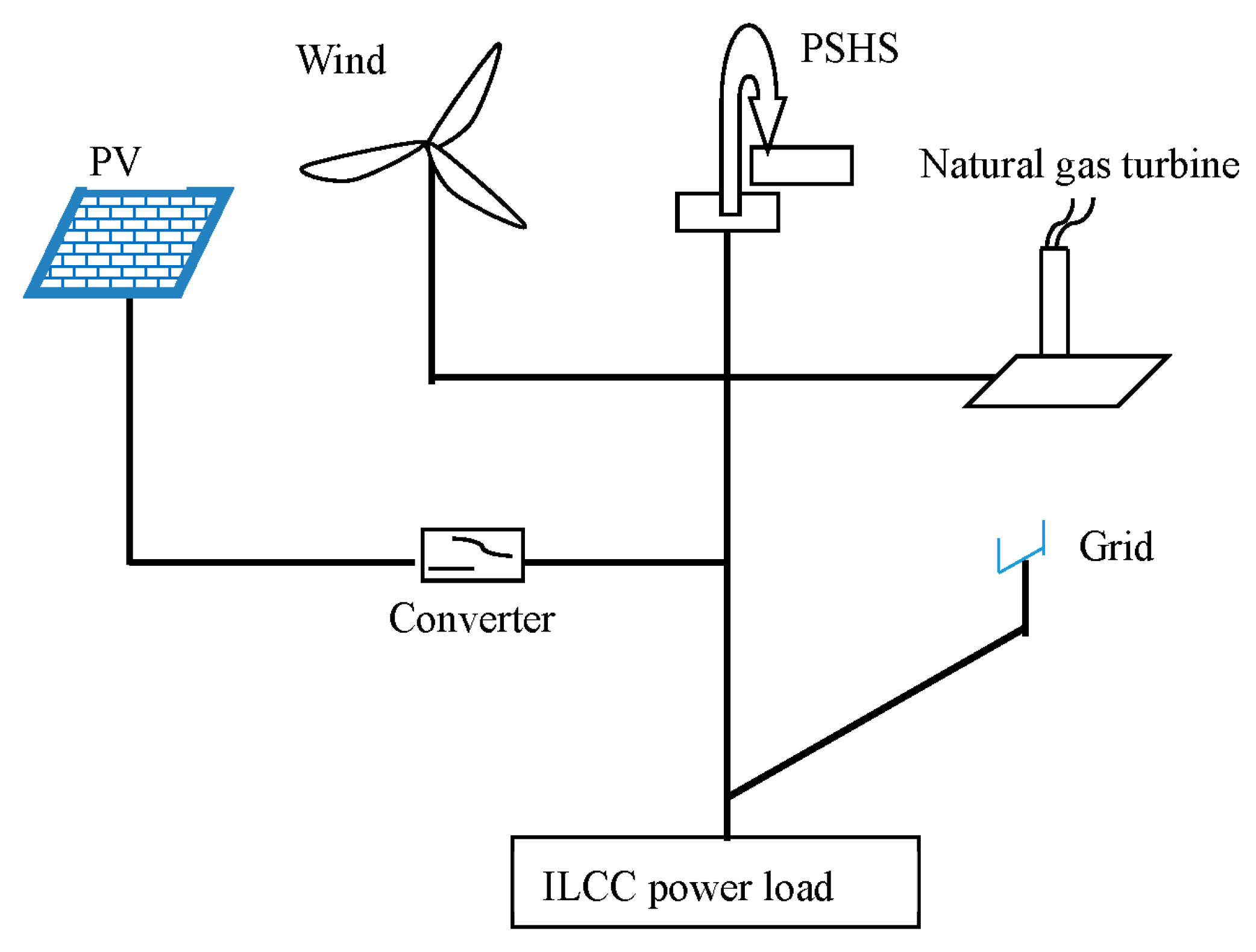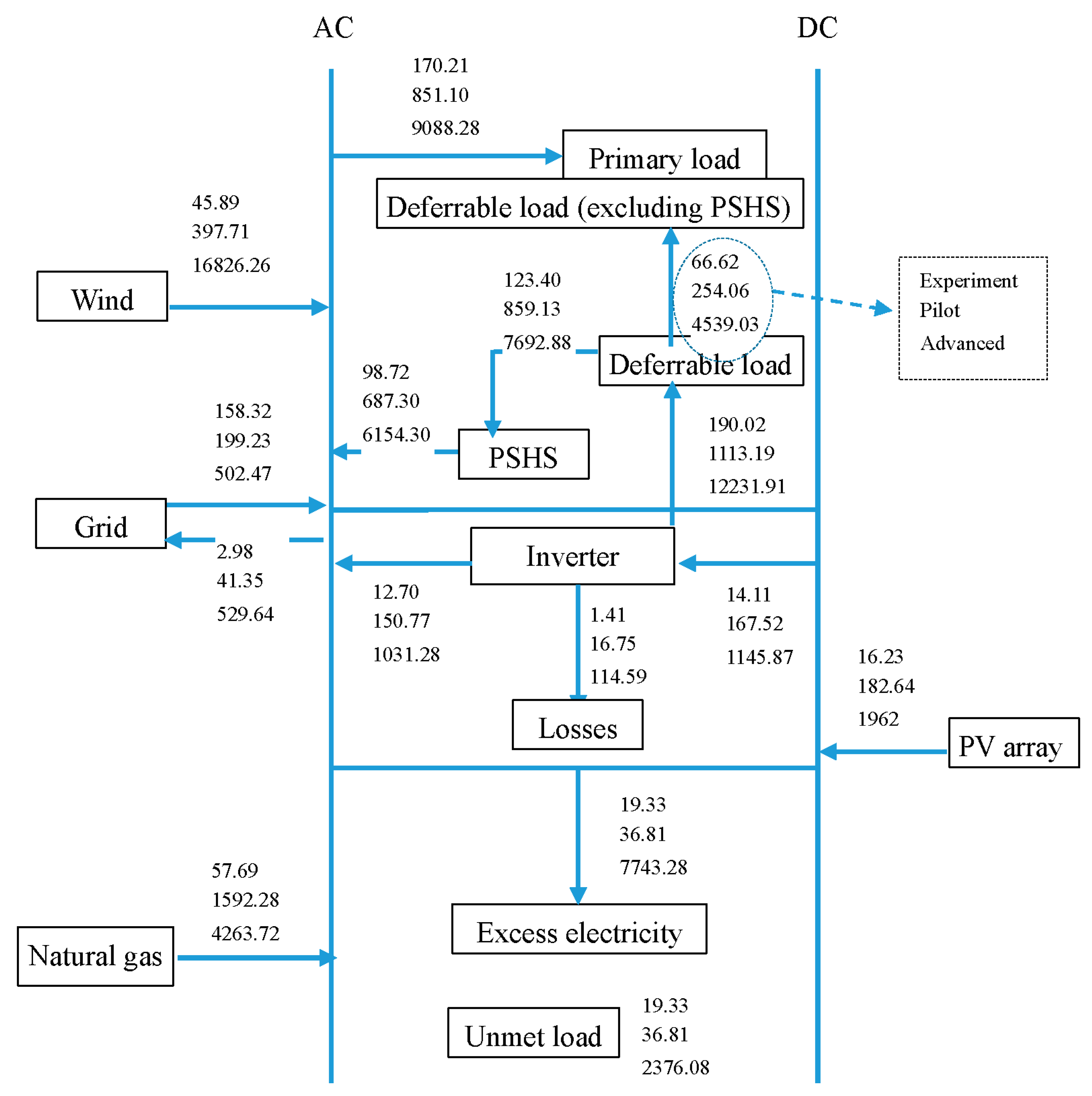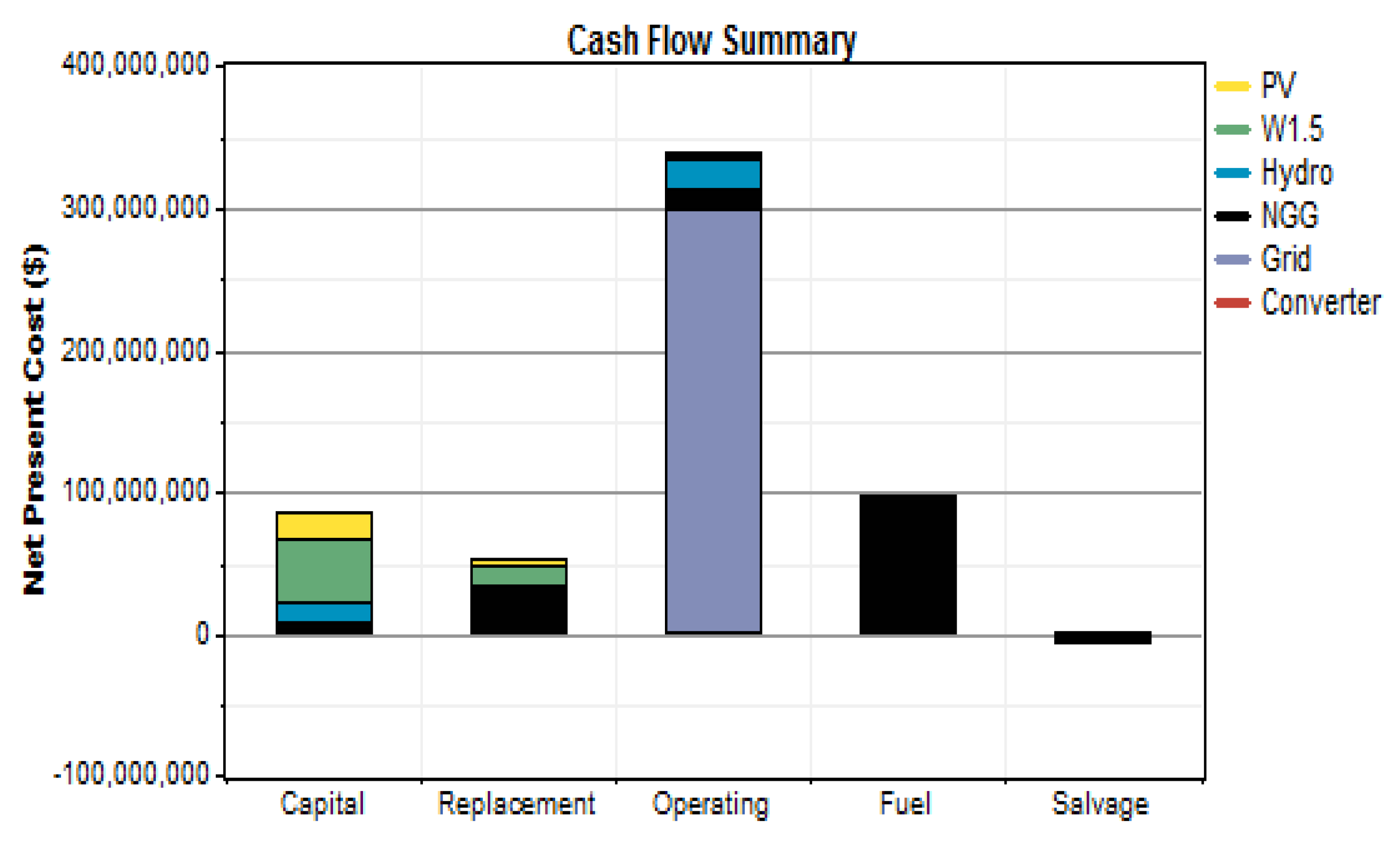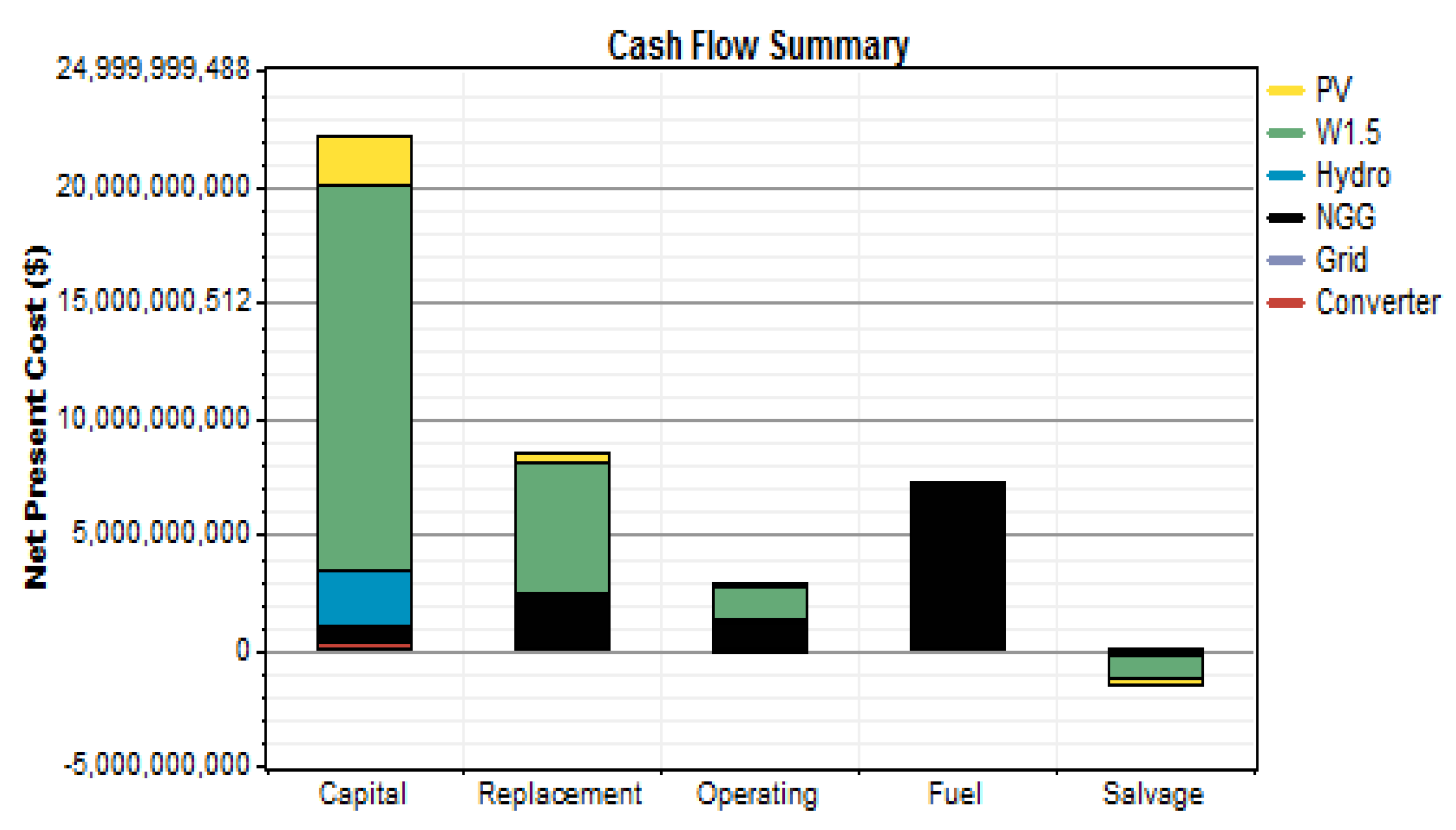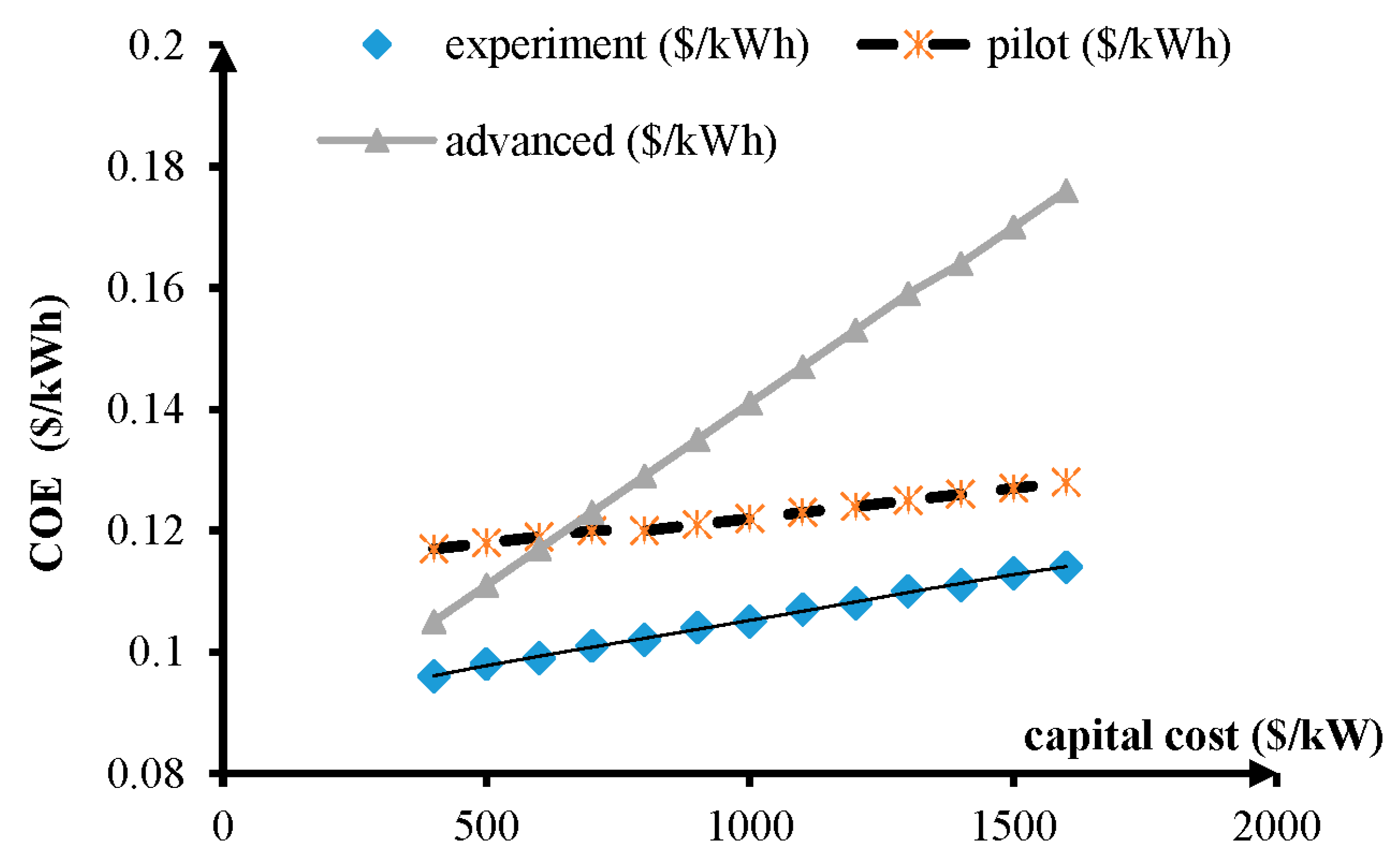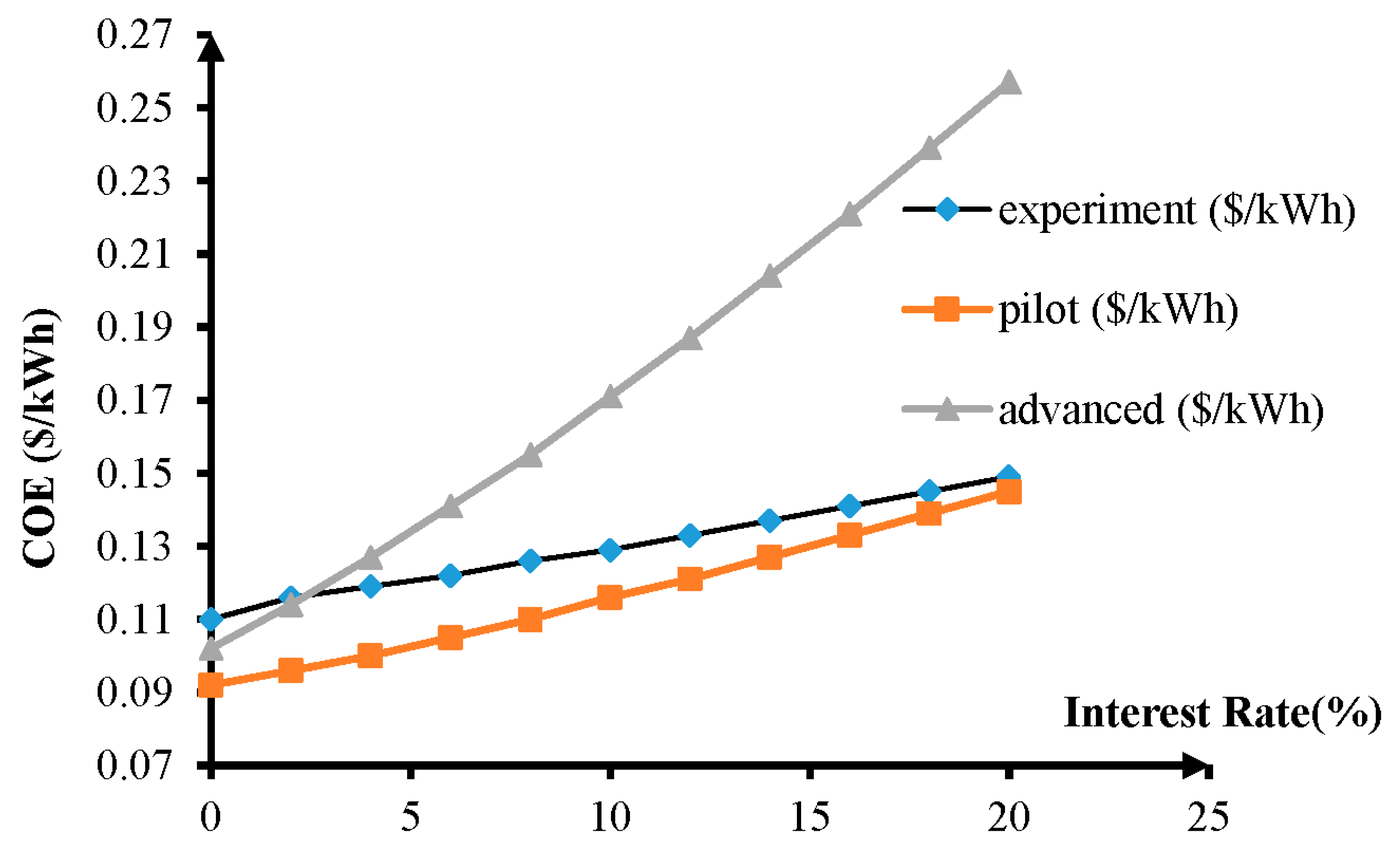1. Introduction
China has become the world’s largest carbon emitter since 2009 [
1]. The share of China’s contribution to the global carbon emissions has doubled from 14% in 2000 to 29% in 2013 [
2]. The rapid urbanization and industrialization processes in the past three decades have been the key driving forces for the surge in China’s carbon emissions. Electricity is the main form of energy consumption in the urban area and its share in the total energy use reached 39% in 2010 in China, while this figure was merely 21% in 1980 [
3]. Due to the energy resource endowments, China’s power sector has been dominated by coal-fired power plants and thus known by its high carbon emission intensity [
4]. As the urbanization rate and electricity consumption will continue to increase in China, switching to a power system with a low carbon emission intensity is of great significance for the sustainable development of the country’s power sector [
3]. When the carbon reduction potential is limited by only improving the efficiency of existing power plants, the Chinese government pays special attention to diversifying the country's energy mix and exploiting different sources of cleaner energy, such as natural gas, wind power and solar energy [
5]. However, the contribution of wind power to the electricity supply has not increased as expected due to various reasons such as power grid construction lag and lack of effective policy support [
6]. Especially, a large amount of wind power was curtailed due to grid constraints [
7]. In order to minimize wind power curtailment and reduce carbon intensity, the Chinese government has increasingly realized the importance of developing distributed power generation systems which are located near the demand sites [
8]. As a result, it is of great value to make a scientific calculation on the energy combination ratio according to local energy demand and energy source conditions [
9].
Urbanization is the key driver of energy usage, and China’s urbanization process is accelerating and will continue to do so for decades [
10,
11]. In order to explore a low carbon urbanization path, the Chinese government has selected several provinces and cities for a national low carbon development pilot project [
12]. However, the city government in China has very limited ability to promote local low carbon development through traditional power supply side management because building large power plants and the expanding power grid are decided by the central government and the two state-owned grid companies [
13,
14,
15]. Regarding the difficulty in promoting low carbon city development in China, a feasible solution is to develop a hybrid energy system based on the distributed micro-grid technology [
16,
17,
18]. The concept of a distributed micro-grid has increasingly gained attention worldwide since it was introduced by the US Electric Power Research Institute in 2001 [
17]. A series of studies have been carried out to investigate the applications of hybrid energy systems. Ho (2014) developed a decision model to assess the energy conservation and renewable energy potential of micro-grid applications in campuses [
19]. Lu (2015) performed a comparison study on two design optimization methods for renewable energy systems in buildings [
20]. Bin (2012) presented a study on an island in China powered by distributed renewable energy based on local resources [
21]. Vettorato (2011) applied spatial and statistical analyses to estimate and compare the potential supply of renewable energy sources and the energy demand of buildings at local scale [
22]. Braslavsky (2015) presented a case study on optimal options for distributed energy resources to reduce carbon emissions using the Distributed Energy Resources Customer Adoption Model tool according to on-site-specific demand, tariffs and performance data for each distributed energy resource technology option available in a large retail shopping center in Sydney [
23].
Building upon previous literature, this paper presents a feasibility analysis on a hybrid energy system which is under design for the city of Shenzhen. The contributions of this study are highlighted as follows: (1) to develop a low carbon energy model that combines hybrid renewable energy generation components for a low carbon demonstration city; and (2) to discuss its economic feasibility and the critical impact factors.
The rest of this paper is organized as follows:
Section 2 introduces the proposed renewable energy model and the major mathematical relationship of the optimization model.
Section 3 presents the model optimization results and makes a sensitive analysis to figure out the key parameters and their influence on the system.
Section 4 is the conclusion of this paper.
2. Methodology
2.1. Model Description
According to the analysis on the local energy resources of the case, the available energy supply options of the hybrid micro-grid model design are wind turbines, a solar photovoltaic (PV) array, gas generators, converters and a pumped-storage hydropower station (PSHS). The system structure is intuitively demonstrated in
Figure 1.
It is difficult to determine how many components and what size of each component should be used. The optimization and sensitivity analysis algorithms provided by the Hybrid Optimization Model for Multiple Energy Resources (HOMER), which was developed at the National Renewable Energy Laboratory of the US, make it easier to evaluate the many possible system configurations. In order to find out the optimal combination of energy from the available resources in the case area to meet the electricity demand in a reliable and sustainable manner and to analyze whether such a hybrid option is a cost-effective solution or not, HOMER is used in this study.
2.2. Energy Demand Forecasting
Shenzhen is one of the low carbon demonstration and carbon emissions trading pilot cities identified by the Chinese central government. From this background, Shenzhen has planned to initiate an international low carbon city (ILCC) demonstration project in one of its less-developed areas (the average GDP per capita of the ILCC area is only one-fifth of the city) [
24]. Realizing the importance of reducing the carbon intensity of power production for low carbon development, the municipal government of Shenzhen plans to build the ILLC based on a low carbon power structure.
The ILCC is situated in the Longgang District, a junction area of Huizhou, Shenzhen and Dongguan cities. It is approximately 40 km away from the downtown area of Shenzhen. The total planned area of the ILCC is 53.4 km2, with a population of about 226,000 in 2013. The low carbon demonstration urban construction project can be divided into three stages. The first stage is the experimental stage, with the objective of developing an area of approximately 1 km2; the second stage, the pilot phase, aims to expand the achievements of the first stage and develop an area of about 5 km2; the third stage is the comprehensive advanced stage, covering the entire 53.4 km2 of the ILCC.
2.2.1. Electricity Consumption
The planned employed population and residential population of the experimental stage of the ILCC is 50,000 and 15,000, respectively. According to urban planning principles in China, the planned Construction Floor Area (CFA) in the experimental stage is 1.8 million square meters. Based on the CFA forecast and the electricity demand benchmarks for different kinds of functional buildings, the total electricity demand for the entire ILCC area (
Table 1) can be obtained as
where
Es is the
s stage total power load (kW),
Ais is the area of
ith kinds of buildings in the
s stage,
dis is the local electricity consumption standard in the
s stage.
From the construction area estimation and the power consumption benchmarks, the total power consumption of the experimental stage of the ILCC is 280 M·kWh/year. In spite of the many affecting factors, it is estimated that cities of similar size (population and area) in a similar development stage (per capita GDP) usually consume 260–300 M·kWh/year of electricity according to previous studies [
26,
27]. Therefore, the electricity consumption estimation is reliable through the above methods.
2.2.2. Power Load Capacity
In a power system planning process, in addition to the total electricity demand forecast, the power load characteristics are also important parameters. The load density method is the commonly used method in regional power load estimation. This paper applies the following power load estimation model:
where
Ps is the planned total power load (kW) in stage
s,
ωis is the load density of the
ith functional area (W/m
2) in stage
s,
Ais is the
ith land area (m
2) in stage
s,
Ris is the
ith floor area ratio in stage
s,
Kis is the
ith power diversity factor in stage
s. According to Equation (2), the different functional areas, the floor area ratios, and load densities are calculated and demonstrated in
Table 2.
2.2.3. Energy System Structure of the Three Stages
It is assumed that the electricity demand of the three stages is proportional to the floor area, while the diversity factor should be considered in the estimation of planned power capacity. According to the power supply and distribution system design specifications, the diversity factors of the experimental, pilot and advanced stages are 0.8, 0.6 and 0.5, respectively [
28]. Therefore, the planned power capacities of the three stages are 58,918 kW, 220,941 kW and 1,966,375 kW, respectively (
Table 3).
2.2.4. Load Classification
Each type of electricity load has an obviously different load curve; there are two types of load in the HOMER model, namely primary load and deferrable load. Primary load is the electrical load that must be met immediately [
29]. Residential, commercial and new industry load (most of the new industry sectors refer to research sectors or advanced services industries) are classified as primary load because they cannot easily be modified. Deferrable load is the electrical load which should be met within a given time period, but the exact timing is not important [
30]. The traditional industrial use load is regarded as deferrable load as it can be scheduled in a 24 h day in order to avoid the peak power demand under the real-time power price policy which is being implemented in Shenzhen. Some public use also applies to this case [
31]. PSHS load can be easily changed according to the system’s power demand. According to the energy system structure of the three stages which were displayed in
Table 1,
Table 2 and
Table 3, the load profiles of the three stages are summarized in
Table 4.
2.3. Available Energy Source Modeling
This subsection presents the major mathematical relationship of parameters in HOMER.
2.3.1. PV Array
The PV array is modeled as a device that produces direct current (DC) in proportion to the global solar radiation incident upon it in HOMER. Power output is calculated using the equation as follows of the PV array [
32]:
where
Fs is the PV derating factor;
Ys is the rated capacity of the PV array (kW);
Is is the global solar radiation incident on the surface of the PV array (kW/m
2);
I0 is the standard amount of radiation used to rate the capacity of the PV array (1 kW/m
2) [
33].
2.3.2. Wind Turbine
The hub height wind speed is figured out in HOMER from the equation below:
Vw is the wind speed of the wind turbine at the hub height (m/s);
Va is the wind speed at the anemometer height (m/s);
Hhub is the wind turbine hub height (m);
Ha is the anemometer height (m);
H0 is the surface roughness length (m).
where
Pw is the power output of the wind turbine (kW),
Pstp is the power output at standard temperature and pressure of the wind turbine; ρ is the air density (kg/m
3), ρ
0 is a constant (1.225 kg/m
3).
2.3.3. Existing Power Transmission Line
Currently, the ILCC’s local grid is connected to the Shenzhen Grid (the commercial local grid system covering the major area of Shenzhen city) 30 km away by an 110 kV bidirectional transmission line. The maximum transmission power capacity is 150,000 kW. It is designed so that the existing transmission line remains unchanged, while the new electricity demand will be satisfied by new power sources. According to the power demand status and the covering area of the three stages, the maximum grid power available for the three stages of the ILCC project is assumed to be 20,000 kW, 40,000 kW and 150,000 kW, respectively.
2.3.4. PSHS
In this study, PSHSs are served as energy storage facilities. The electrical power output is calculated according to the following equation of the hydro turbine:
where
Phyd is the power output (kW),
ρwater is the efficiency of the hydro turbine (%),
hnet is the water density (1000 kg/m
3),
g is the gravity constant (9.81 m/s
2),
Qturbine is the effective head (m).
2.4. List of Key Data Input
Some of the major variables and their assigned value in the model are displayed as follows.
2.4.1. Power Station Construction–Related Parameters
The power station construction–related parameters are presented in
Table 5.
2.4.2. System-Related Parameters
The system operation–related parameters are presented in
Table 6.
2.4.3. Natural Resource–Related Parameters
- (1)
Solar Energy
Shenzhen is located between 113°46′ and 114°37′ East longitude, and between 22°27′ and 22°52′ North latitude. HOMER uses latitude values and the clearness value to calculate the average daily solar radiation. On average, the yearly sunshine of the ILCC area is 1875–2080 h and the daily solar radiation is 4.41 kWh/m
2 [
21].
Figure 2 demonstrates the monthly solar radiation data of a typical year in Shenzhen.
When the installation of the PV panel is limited by space, it is assumed that the maximum available spaces for PV panel installation account for 20% of the total area for each stage.
- (2)
Wind Resource
According to the Shenzhen solar and wind resource assessment report, the ILCC area in Shenzhen is not a wind resource–rich region [
37]. The Dapeng Peninsula, approximately 30 km away from the ILCC area, has relatively more abundant wind resource, and therefore has a higher value for developing wind energy. From the viewpoint of improving the wind energy resource utilization efficiency and reducing the cost of wind power generation, the wind farm site is selected at the Dapeng Peninsula area. The average wind speed and average wind power density at the height of 10 m and 70 m are 4.0–5.0 m/s and 6.0–7.5 m/s, respectively [
37].
- (3)
Hydro Resource
Due to the rapid increase in urban size and the relative scarcity of water resources, the urban water conservancy facilities’ construction has been a priority for the Shenzhen government. As a result, the reservoir density in Shenzhen is higher than any other city in China. There are 164 water reservoirs in Shenzhen with a total storage capacity of 223 M·m3 as of 2013. There are two water reservoirs in the ILCC area, the Changken and the Baishitang reservoirs, with a total storage capacity of 2.8 M·m3. According to the storage capacity and water head difference of the two reservoirs, two PSHSs with a total installed capacity of 13 MW can be built for the experimental stage. For the pilot and advanced stage, external water reservoirs are needed.
- (4)
Natural Gas
The natural gas supplies of Shenzhen are in two forms: one is via domestic natural gas pipelines, and the second is from imported liquefied natural gas (LNG). The national natural gas pipeline network was extended to Shenzhen in 2013, while the city has also built an LNG receiving dock at the Dapeng Peninsula. The gas supply capacity from domestic sources and abroad is sufficient to meet local gas demand in Shenzhen.
4. Conclusions
A technology and economic feasibility study on renewable energy–powered low carbon demonstration area was conducted. The study was based on an optimization model using the official city planning road map and local available renewable energy resource data. The optimization results showed that local renewable energy resources cannot meet the energy demand unless external wind power is brought in for the pilot and advanced stages. The COEs for the experiment, pilot and advanced stages of the ILCC project were 0.122 $/kWh, 0.105 $/kWh, and 0.141 $/kWh, respectively, in the presence of external wind farms and PSHSs. The cost of the hybrid renewable energy system was affordable compared to the existing energy price in Shenzhen if the distribution cost of the power was negligible. The optimization results also revealed that the carbon reduction rate is 46.81%, 62.99% and 75.76% for the three stages compared with the BAU scenarios. The sensitivity analysis showed that the capital cost of the wind power and interest rate have more significant influences on the COE in the advanced stage than in the other two stages. The analysis also revealed that the energy storage capability is crucial if a region wants to maximum the utilization of local renewable energy. The PSHS is one kind of stable and reliable energy storage facility. The widely distributed water reservoir in Shenzhen provided an ideal condition for the construction of a PSHS. However, recognizing the fact that a PSHS usually has a great impact on the local environment, a comprehensive environmental impact assessment needs to be carried out in the actual planning process.
